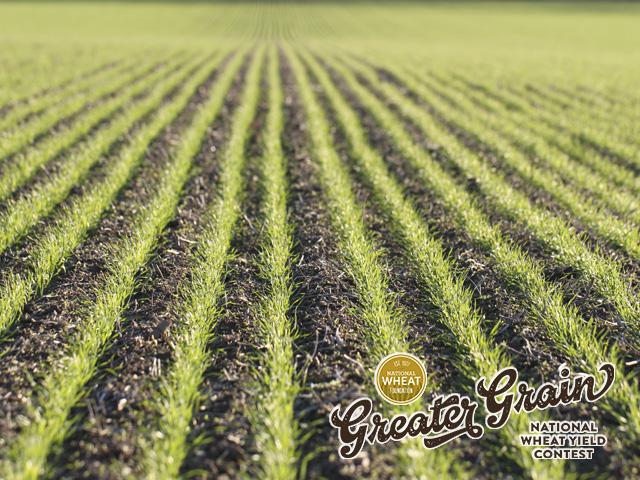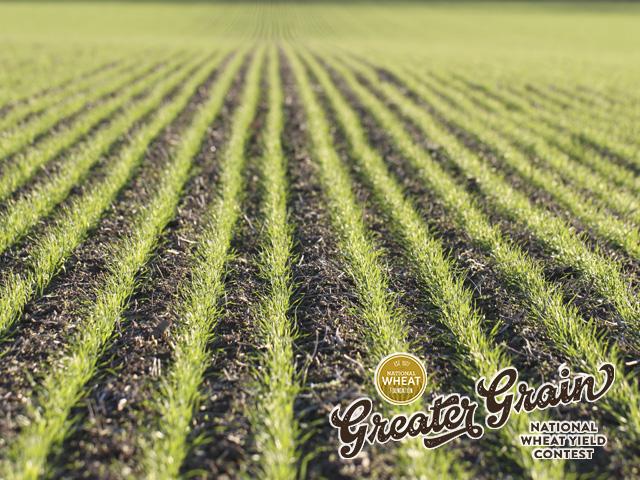Production Blog
Contest Puts Wheat Through its Paces
Back in 2015, I was having breakfast with some members of the National Wheat Foundation board when they outlined the framework of a national wheat yield contest.
It seemed like such a great idea, but maybe that's because I have always believed wheat deserves more attention. Beautiful to look at, the crop is highly resilient, great in rotations, versatile as feed and forage -- and it's yummy and nutritious for humans, too. There's a lot to like.
Sure, it's subject to nature and market cycles. But as I listened to the contest planners, the thing that really sold me was their universal attitude that this great crop could be made greater.
Make no mistake, the bin buster winner title bestowed on the four category winners each year shines a spotlight on yields. One of the goals of the contest has always been to increase U.S. wheat growers' productivity to ensure an ample supply for domestic and foreign customers. This year's 231.37 bushel per acre (bpa) accomplishment does that in a big way. Not only is that a record for the 7-year-old contest, but in 2022, three entries landed above the 200 bpa mark with several others close behind.
Beyond those national awards are state contests winners. Entries from 27 states flowed in this year, representing the many different classes of wheat.
Still, this was a tough year for many sectors of wheat country. The lack of entries taken to harvest from Kansas, Oklahoma and Texas were evidence of the extreme climate scenarios that swept across those states.
But what is cool about this contest is that it also looks at how much those yields exceed averages for the region. The contest compares dryland entries on the percentage by which their measured yield exceeds the most recent five-year Olympic County average. This levels the playing field for those growers producing wheat in areas that have more challenging conditions and gives them a barometer of their improvements.
P[L1] D[0x0] M[300x250] OOP[F] ADUNIT[] T[]
Stay tuned, we'll be writing about some of these farmers that have exceeded county averages in additional coverage.
NEW RULES
The 2022 contest included a few new rule tweaks. This year, the contest required keeping a 6-pound sample of each plot harvested. Entrants were asked to keep the sample at home instead of sending it with the entry. Contestants had their sample graded at a local elevator and uploaded proof that it was either Grade 1 or Grade 2 as part of their harvest record.
If the submitted harvest report qualified the producer as one of the 24 National winners, the entrant was sent shipping instructions and postage to send their sample in for official testing for milling and baking qualities. If the samples meet all the markers for industry-desired quality, the farmer will receive an additional $500 award.
The hard wheats will be sent to Northern Crops Institute in Fargo for milling and baking tests. They will be tested for protein, test weight, falling numbers and farinograph tested. The baking test will be a bread loaf. The soft wheats will go to the Wheat Marketing Center in Portland where they will be tested for test weight, thousand kernel weight, falling numbers, alveograph tested and baked into either a sugar cookie (soft red) or a sponge cake (soft white). The labs should have results available by the first of December.
Anne Osborne, who oversees the contest for the National Wheat Foundation (NWF), said the goal is to build a database that can sort out how wheat management practices affect critical quality standards. "What we're looking forward to learning is how to get these higher yields and keep that excellent quality that customers want," she explained.
Kentucky farmer Bernard Peterson, who also serves as NWF vice-chair, said he appreciates how the contest echoes work the foundation has done with millers and bakers. By adding quality as a key ingredient in the yield contest recipe, "we know that we are not only producing a highly productive crop, but one that is valuable to our end users," said Peterson.
That definition of quality can vary a lot depending on the customer and by wheat class, but knowledge is power. Osborne said organizers are already looking at ways to tweak the contest further for next year. There will be only one entry deadline and the fee to enter will remain at $100/entry, which many contestants use sponsor vouchers to pay.
The 2022 sponsors of the contest include: WestBred, John Deere, BASF, The McGregor Company, U.S. Wheat Associates, AgriMaXX, Limagrain Cereal Seeds, CoAxium, UPL, Ardent Mills, PlainsGold, Mennel, Dyna-Gro, Ohio Corn and Wheat, Croplan, Miller Milling, GrainCraft, Michigan Wheat, GrainSense, Elevate Ag, FarmLogs, Grow Pro Genetics, Northern Crops Institute, North Dakota Mill and Elevator.
DTN/Progressive Farmer is the official publication of the National Wheat Yield contest.
For more information on the requirements of the contest go to: https://wheatfoundation.org/…
To read DTN's coverage of the winners go to: https://www.dtnpf.com/…
Pamela Smith can be reached at pamela.smith@dtn.com
Follow her on Twitter @PamSmithDTN
(c) Copyright 2022 DTN, LLC. All rights reserved.






Comments
To comment, please Log In or Join our Community .